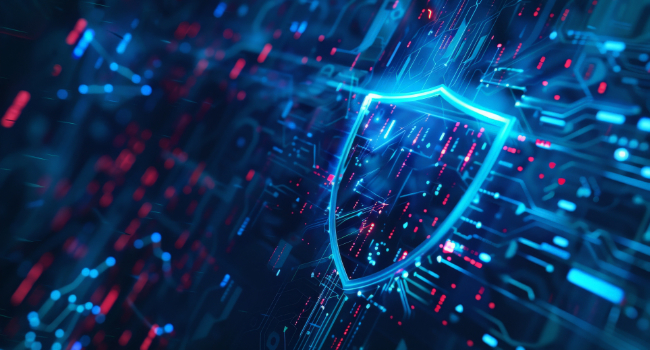
Failed Cybersecurity Controls Costing U.S. Businesses $30 Billion Yearly
Panaseer recently released ControlWatch and the Continuous Controls Battle: Panaseer 2025 Security Leaders Report examining the cost of cybersecurity control failures and the impact of growing personal liability for security failings on security leaders.
The report analyzes the findings of a survey of 400 security decision makers (SDMs) across the US and UK. It shows that security leaders feel under increasing pressure to provide assurances around cybersecurity, exposing them to greater personal risk – yet many lack the data and resources to accurately report and close cybersecurity gaps.
Key findings include:
The billion $ cost of cybersecurity control failures: 61% of organizations have suffered a security breach in the past year because their policies, governance, and controls failed or were not working effectively. This is costing US businesses a total of $30bn per year1. As a result, 90% of SDMs say they’re being expected to provide greater assurances specifically around security control performance.
Pressure is mounting but many security leaders don’t trust their numbers: 85% of SDMs are facing greater scrutiny from the board. 57% say they are constantly being asked to provide assurances, but lack the trusted data they need to provide them – while only 55% are fully confident that data presented to senior management and the board is fully accurate.
Personal indemnity insurance is a must-have – but some may not be as protected as they think: 72% of security leaders have taken out personal indemnity insurance in the past year to protect themselves from the consequences of security failures, and a further 20% are looking into it. However, just 34% of those with insurance have it in perpetuity; leaving them vulnerable if they leave their current company.
“
In the wake of highly publicized attacks – such as the SUNBURST SolarWinds breach – regulators like the SEC are enforcing criminal charges and stringent rules on CISOs, who are under a corporate sword of Damocles. Their feet are being held to the fire by boards and regulators, but they lack the data to provide accurate insights that would help hold the business accountable. After all it’s business risk, not CISO risk,” says Jonathan Gill, CEO at Panaseer. “Some CISOs have been forced to plaster over the cracks with personal indemnity insurance. But this treats the symptoms without addressing the causes. If this blame game culture continues while CISOs are left powerless to provide accurate assurances, many will leave the industry – either of their own volition, or at the behest of courts.”
75% of security leaders feel they have greater personal liability for security failures now compared to two years ago. Most SDMs (72%) think this is at least somewhat fair, with 44% saying it will be a good thing, as it will lead to higher standards in the industry – and 47% saying it has made them even more cautious, which is not a bad thing. A further 31% are primed to take advantage of the changes, saying that they can ask for greater renumeration now that the stakes are higher.
However, a significant minority disagree with increased liability falling on their shoulders. More than a quarter (28%) of SDMs think it’s unfair that CISOs and security leaders can be held personally accountable for security failures, with 23% saying it makes them ‘angry’ that they should have personal risk around security failings. A further 15% say they have considered leaving the industry, while 41% say they are feeling more anxious about their decision making.
“It’s understandable that security leaders have mixed feelings about having greater liability. For some, it will sharpen the mind – raising standards across the industry. For others, it’ll pile more pressure onto an already demanding role,” says Gill. “Ownership, accountability, and responsibility are positives in cybersecurity, but if those tenets go too far, they put undue stress on individuals, rather than the collective. The industry must avoid putting a target on a single person’s back. CISOs shouldn’t be made scapegoats for security incidents, while ignoring all the good work they do.”
One of the major issues outlined in the report adding to security leaders’ trepidation is the extra reporting pressure security teams are under, with 72% stating that if their team could spend less time on reporting they would prevent more breaches. Yet many lack the data and insights needed to provide assurances to the board and senior management. Security teams are being asked to provide assurances on an increasing range of areas – from the company's overall risk of a data breach (65%); to its compliance posture and how to reach/maintain it (48%); right through to business loss impact (37%). Furthermore, 89% of security leaders are expected to provide more data around the role and effectiveness of security investments – with 76% saying they are under greater pressure to provide metrics to justify cyber ROI.
However, 67% say cybersecurity teams are not equipped with the specialized analytical tools needed to provide these assurances to boards and regulators. As a result, 70% of SDMs say they have visibility gaps that prevent them from having a clear picture of risk as there are too many unknowns. This lack of tooling is adding pressure onto teams, with 85% saying they have to influence and drive accountability for implementing security controls with a greater number of teams outside of security.
“While other business units are empowered with specialized tools – like SAP and Salesforce – to enable data-driven insight, CISOs are often left to make do with disparate tools and no single, trusted view,” says Gill. “We need to even the odds, giving security leaders a system of record that offers a transparent view of every asset within an organization. Armed with this golden source of truth, CISOs are empowered to provide assurances, report risk in good faith, discover gaps in security and plug them before security incidents take place, protecting both themselves and their company.”